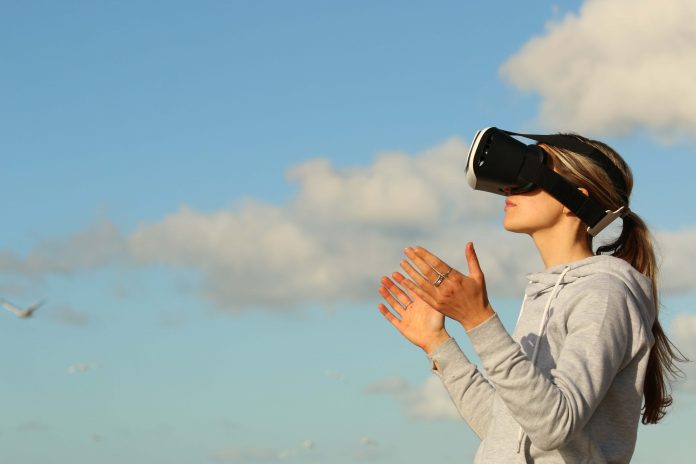Augmented reality (AR) is already making a big splash on mobile. Apple’s official move into augmented reality was announced at WWDC in 2017. Developers then got their hands on the tools to make it happen. Word has been around that this technology will be affordable in the future, and one can pay using cryptocurrencies to buy AR-integrated devices.
Talking about cryptos, have you ever wondered about investing in such currencies? Especially if you buy apecoin, you can vote on how the ApeCoin DAO Fund should be used through the permissionless governance process.
The ARKit toolkit is Apple’s official set of developer tools for building augmented reality experiences for iOS. It works on the iPhone, iPad, and iPod but not on the Apple Watch or the Mac. Visual Inertial Odometry (VIO) gives apps that use ARKit a sense of the world around them.
AR “videos” are being made in front of your eyes as part of large-scale projects. From there, developers can do different things. Some of the most remarkable examples involve walking through imaginary doors into new worlds.
AR is possible if an app can use the device’s camera and know where it is. A simple text or image overlays add to what is already there. It’s common, and Apple’s version is much easier to use than Google’s Tango. ( Putting virtual furniture in a home is an excellent example of how Tango is better than ARKit. Wayfair R&D lead Mike Fiesta recently told Android Central, “You can move things around in the room, leave, and come back, and everything is still in the same place.”
The VR and XR gear will have a futuristic design
Many advanced features, such as hand detection and eye tracking, will be standard in future VR goggles. Thanks to hand detection, users can be more expressive and have a more personal experience in virtual reality (VR), eliminating the need for bulky devices. In addition, the system uses the user’s gaze to optimize the visual quality and resolution precisely where it matters most: where the user is looking (exactly how the human eye does). This causes less strain on the system, less delay, and less sickness.
New XR add-ons will be available to enhance your adventure. The startup Ekto VR has developed robotic boots that can be worn with a VR headset to give the user the impression that they are walking in sync with their virtual surroundings, even while they are actually standing still. The Ekto One robotic boots resemble futuristic roller skates, but their disc-like treads spin opposite the wearer’s feet to provide a natural feel and responsiveness. These kinds of add-ons may become standard for VR shortly.
All of us will be able to wear haptic suits. To some extent, this is already the case with haptic gloves that use vibrations to mimic the sensation of touch. Well, what about full-body armor? The TESLASUIT is one example of a full-body suit now on the market, but it is prohibitively expensive for the average VR user. In the future, they will likely grow more accessible, familiar, and efficient, ushering in yet another technological advance for virtual reality.
Giving rise to XR tech
XR technology may integrate with the human body beyond external accessories and devices. AR contacts are one way. AR glasses may become obsolete as AR lenses get better, cheaper, and more comfortable. In 2020, California-based startup Mojo Vision announced it was creating AR contact lenses with micro-LED screens.
Imagine AR lenses’ uses. Mojo’s priority is helping folks with weak vision (by providing better contrast or the ability to zoom in on objects). The lenses might project health-tracking information and other essential data for daily consumers. When displaying the prototype to media, the glasses showed text messages and the weather report, illustrating that AR lenses could help us consume content in new ways. It could also improve our vision in low light (even if our eyesight is otherwise satisfactory) or function as a teleprompter for speeches.
AR lenses could supplement the world so we can see whatever we desire. Say you want to know who designed and built a beautiful structure. Your lenses could overlay information before your eyes. All of this would blur the real-virtu
Benefits of XR
Everyone is very optimistic about where XR is going. XR is about turning information into experiences, which can make many parts of our lives more prosperous and satisfying.
XR definitely has a lot of potential to help businesses succeed, whether that means getting closer to customers, making training more immersive, streamlining business processes like manufacturing and maintenance, or just giving customers new ways to solve their problems. Yes, there are problems to deal with (individual privacy, ethics, and so on). But the possible benefits of XR are much bigger than the problems it could cause.
Augmented reality is something that developers should think about, whether they are making apps for Android or iOS. It’s not all or nothing. The app used to place furniture virtually doesn’t have to be based on e-commerce. AR is also more technical debt, so we don’t think it’s something you should take lightly. It’s a feature that users might like.





